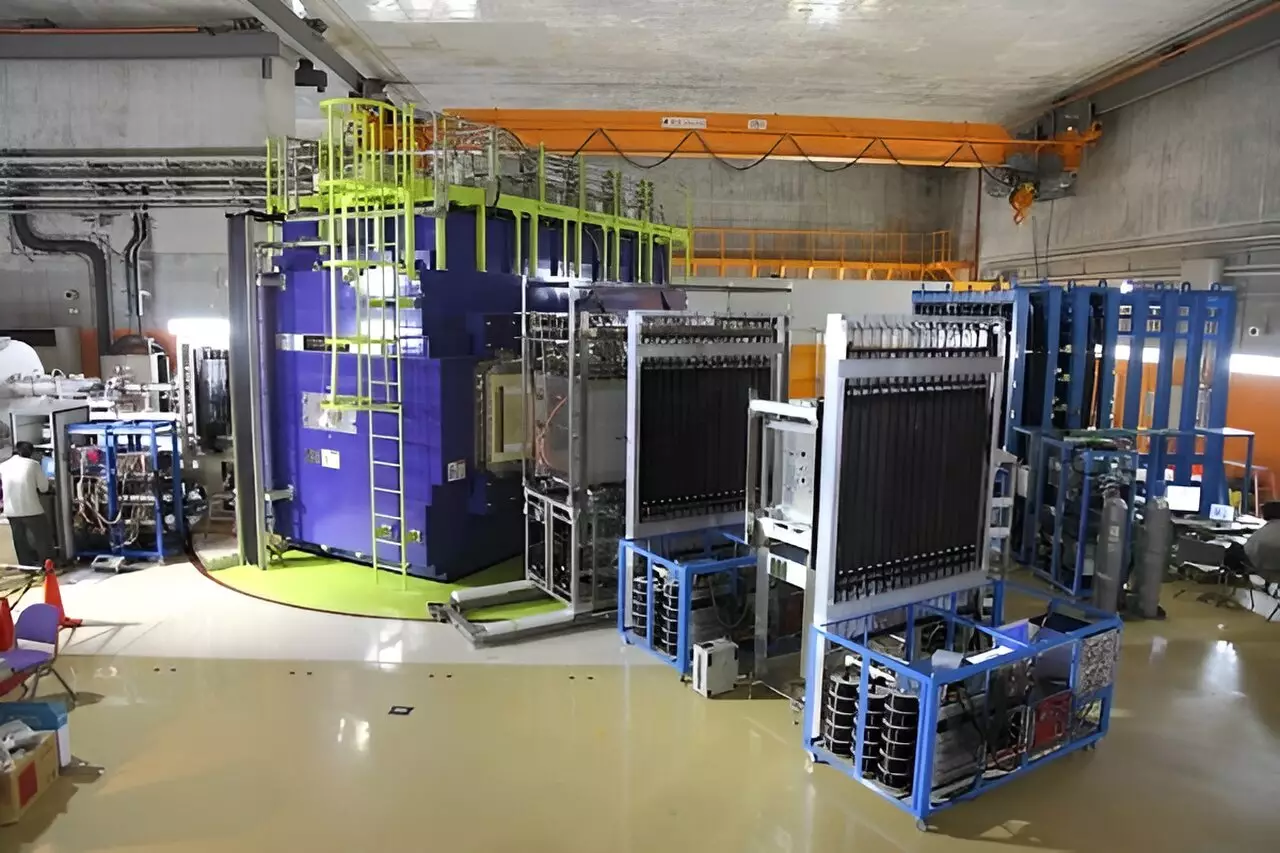The field of nuclear physics continuously ventures into the unknown, exploiting the frontiers of atomic structure to enhance our understanding of matter at its most fundamental level. A case in point is the recent discovery involving the rare fluorine isotope, 30F, facilitated by sophisticated techniques implemented at RIKEN’s RI Beam Factory in Japan. The fruitful collaboration known as SAMURAI21-NeuLAND, which encompasses a broad international research community, is delving into the properties of nuclear isotopes that exert fascinating implications for our comprehension of nuclear architecture and its underlying principles.
Research centered around 30F introduces intriguing avenues for the exploration of rare nuclear states. The work presented by the SAMURAI21-NeuLAND collaboration posits evidence of a potential superfluid state within neutron-rich isotopes such as 29F and 28O. With an aspect ratio indicative of extreme conditions, the research challenges existing assumptions associated with nuclear ‘magic numbers’. “We are pushing the boundaries of existence,” noted researcher Julian Kahlbow. By measuring the mass and neutron separation energy of 30F, which is a nucleus that exists only fleetingly—on the order of 10 to 20 seconds—it becomes pivotal to establish how conventional nuclear structure tenets hold up in this unusual context.
The enigmatic property of 30F arises from its paradoxical existence; it is termed “unbound,” as it does not have the stability afforded to more predominant isotopes. Consequently, this feature complicates direct measurement efforts, rendering traditional nuclear study techniques ineffective. Instead, Kahlbow and his collaborators took an indirect approach, leveraging decay products to glean insights about this elusive isotope, thus unmasking a sector of the nuclear landscape previously obscured from view.
The experimental setup involved state-of-the-art facilities, beginning with the generation of an ion beam of 31Ne, produced using the BigRIPS fragment separator. Projected at nearly 60% of the speed of light onto a liquid hydrogen target, this cannonade resulted in the generation of 30F. Upon immediate decay, the resulting particles—29F and a single neutron—were analyzed using the SAMURAI detector system and the NeuLAND neutron detector, vital components in enabling precise measurements.
The execution of this research exemplifies not just the sophisticated technological apparatus involved but also the collaborative spirit of the scientific community. With over 80 researchers lending their expertise, the experiment illustrates how a global network of academics can converge to tackle highly complex scientific challenges.
One of the most compelling aspects of this research is its implications regarding superfluidity in nuclear matter. Traditional nuclear physics has presented ‘magic numbers’—specific numbers of protons or neutrons that confer unusual stability to the nucleus. However, the findings concerning 29F and 28O suggest that the phenomenon of superfluidity might operate in a different regime, where neutrons exhibit behavior akin to pair formation akin to Bose-Einstein condensates.
Kahlbow posited that the study revealed nuclear structures losing their historic ‘magicity,’ leading to a new framework of understanding pairing interactions in neutron-rich environments. These findings depart from classical notions, raising fundamental questions about nuclear stability under less stable conditions. They lay the groundwork for future directed explorations concerning neutron correlation and spacing, essential to understanding not just fluorine isotopes but the broader implications within nuclear structure theory.
The significance of this research extends far beyond the immediate study of 30F. The collaborative team’s insights are poised to inform potential experimental approaches for identifying halo nuclei—structures where neutrons dwell far from the nucleonic core—along the isotopes of fluorine. This intrinsic characteristic may furnish dramatic revelations concerning nuclear interactions and matter behavior in less explored territories of the nuclide chart.
Furthermore, these studies will play a crucial role in enhancing our understanding of neutron stars—massive celestial bodies where nuclear structural behaviors at extreme densities continue to puzzle physicists. By mapping the intricacies of pairing interactions and neutron arrangements, researchers hope to inform models critical in astrophysical contexts.
As emerging insights continue to reshape our comprehension of nuclear structures, the study of isotopes like 30F signifies a new epoch in nuclear inquiry. Scholars within the SAMURAI21/NeuLAND collaboration aim not only to verify theories but also to chart a course through the uncharted regions of the isotopic landscape. The mysteries yet to be unearthed in this sphere resonate with the long-standing curiosity of humanity regarding the building blocks of matter and the fabric of the universe. By unlocking these riddles, scientists take strides toward a clearer understanding of both nuclear physics and the cosmos as a whole. In doing so, they lay down the crucial stepping stones for future discoveries that await on the horizon.


Leave a Reply